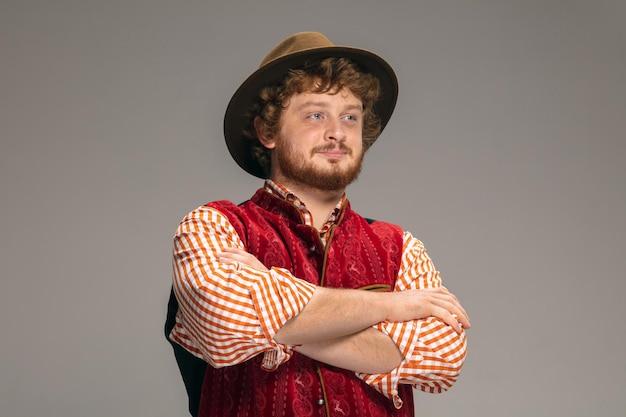Fiddler on the Roof is a beloved musical that has captured the hearts of audiences since its debut on Broadway in 1964. Set in the fictional village of Anatevka, the story follows Tevye, a poor milkman, and his family as they navigate the challenges and joys of life in early 20th-century Russia.
This iconic musical, with its memorable songs like “If I Were a Rich Man,” has had a lasting impact on popular culture. But what time period does Fiddler on the Roof actually take place in? How is it relevant to audiences today? And why does it continue to resonate with people of all ages?
In this blog post, we’ll dive into the historical context of Fiddler on the Roof, explore the themes of tradition and change that the characters grapple with, and discuss why this musical remains a timeless classic. So, sit back, relax, and join us on a journey through the world of Fiddler on the Roof.

What Time Period Was Fiddler on the Roof?
Have you ever found yourself singing along to “Tradition” or tapping your feet to “Fiddler on the Roof”? This iconic musical has captured the hearts of audiences worldwide with its timeless songs and touching storyline. But have you ever wondered when exactly this story takes place? Let’s step back in time and explore the period in which “Fiddler on the Roof” is set.
The Setting: A Charming Little Village
Anatevka: the name might sound unfamiliar, but it’s the fictional village where the tale unfolds. Picture colorful cottages with thatched roofs, cobblestone streets, and a vibrant community buzzing with life. This peaceful place may seem like it belongs in a fairytale, but it actually represents a traditional Jewish shtetl in Imperial Russia. Ah, Russia – land of furry hats, balalaikas, and nesting dolls.
A Dash of Historical Context
The musical is primarily set during the early 1900s, around the time of the Russian Empire’s last years. It was an era of significant change, with Russia undergoing a series of transformations that would shape its future. From political instability to cultural shifts, it was a tumultuous period indeed.
Tsars, Troubles, and Tevye
Tevye, our charismatic protagonist, is a humble milkman trying to make ends meet for his family. He provides a comedic touch to the story through his witty remarks and endearing conversations with God. Tevye’s struggles mirror the challenges faced by many Jews in that time period, as they grappled with changing social norms, anti-Semitism, and the decline of the traditional way of life.
Waves of Change: A World in Transition
The early 1900s saw waves of political and social change crashing against the shores of many nations. Russia was no exception. From whispered rumors of revolution to the echoes of empires crumbling, the events unfolding outside the tranquil borders of Anatevka would soon leave their mark on the lives of its inhabitants.
The Russian Revolution and Beyond
As the story progresses, we witness the winds of change grow stronger. The Russian Revolution of 1917 marks a turning point in history, signaling the end of the Russian Empire and the dawn of the Soviet Union. This historical backdrop adds an extra layer of tension to the lives of the characters, as they navigate the shifting currents of a world in transition.
A Universal Tale With Timeless Themes
Although “Fiddler on the Roof” is set in a specific time and place, its themes of family, tradition, and cultural identity resonate with audiences across generations and cultures. The struggles faced by Tevye and his community transcend any particular time period, reminding us of the enduring power of storytelling.
So, next time you find yourself humming along to “Sunrise, Sunset,” take a moment to appreciate the rich historical context that frames the captivating story of “Fiddler on the Roof.” It’s a journey back in time woven with humor, heartfelt moments, and a touch of whimsy. Now, sit back, relax, and immerse yourself in the enchanting world of Anatevka.

FAQ: What Time Period was Fiddler on the Roof?
Welcome to our FAQ-style section all about the time period of the beloved musical, Fiddler on the Roof! If you’ve ever found yourself wondering about the historical context, release dates, and other intriguing tidbits surrounding this iconic show, you’re in the right place. So sit back, relax, and let us take you on a journey through time!
When did “If I Were a Rich Man” come out
Ah, the catchy and timeless tune that is “If I Were a Rich Man.” This classic song was first introduced to the world in 1964, as part of the original Broadway production of Fiddler on the Roof. So, if you’re ever in the mood to channel your inner Tevye and daydream about a life of luxury, you know which melody to hum!
What is the family in Fiddler on the Roof struggling with
The heart of Fiddler on the Roof lies in the struggles faced by the fictional Jewish family, the Tevyes, in early 20th-century Russia. Set in a small village called Anatevka, the Tevye family navigates the challenges of societal traditions, changing times, and the ever-present threat of anti-Semitism. Through it all, their love, resilience, and unwavering spirit shine brightly.
What movie was “If I Were a Rich Girl” in
Now, this is a little mix-up we can clarify. The song “If I Were a Rich Girl” actually comes from a different cultural gem – the 2004 film “Mean Girls” starring Lindsay Lohan. While Fiddler on the Roof has undoubtedly inspired countless productions and interpretations, “If I Were a Rich Girl” does not make an appearance in the original musical. But don’t worry, we won’t judge if you find yourself humming both tunes!
What musical is “If I Were a Rich Man” from
Now, we’re back on track! “If I Were a Rich Man” is a standout song from the musical Fiddler on the Roof. It’s a comical and uplifting number where Tevye, the lovable milkman, dreams of a life of wealth, luxury, and freedom from his daily struggles. Bursting with humor and toe-tapping melodies, this song has become an emblem of the show’s charm and universal appeal.
Is “If I Were a Rich Man” a good audition song
Absolutely! “If I Were a Rich Man” is frequently chosen as an audition song, thanks to its memorable lyrics and the opportunity it provides for performers to showcase their vocal talents and comedic timing. Whether you’re auditioning for a high school production or a Broadway show, this song is sure to leave a lasting impression on the audition panel. So, go ahead, belt it out and let your inner Tevye shine!
When did Fiddler on the Roof debut on Broadway
The enchanting world of Fiddler on the Roof first came to life on the Broadway stage on September 22, 1964. It quickly captured the hearts of audiences, running for a record-breaking 3,242 performances and becoming the longest-running musical at the time. Its timeless themes, memorable melodies, and masterful storytelling continue to captivate theatergoers to this day.
And there you have it! A comprehensive FAQ-style section that delves into the time period of Fiddler on the Roof. We hope we’ve answered all your burning questions and piqued your curiosity about this extraordinary musical. So, whether you’re a long-time fan or a newcomer to the world of Tevye and his family, let the magic of Fiddler on the Roof transport you to a time filled with laughter, love, and tradition!
